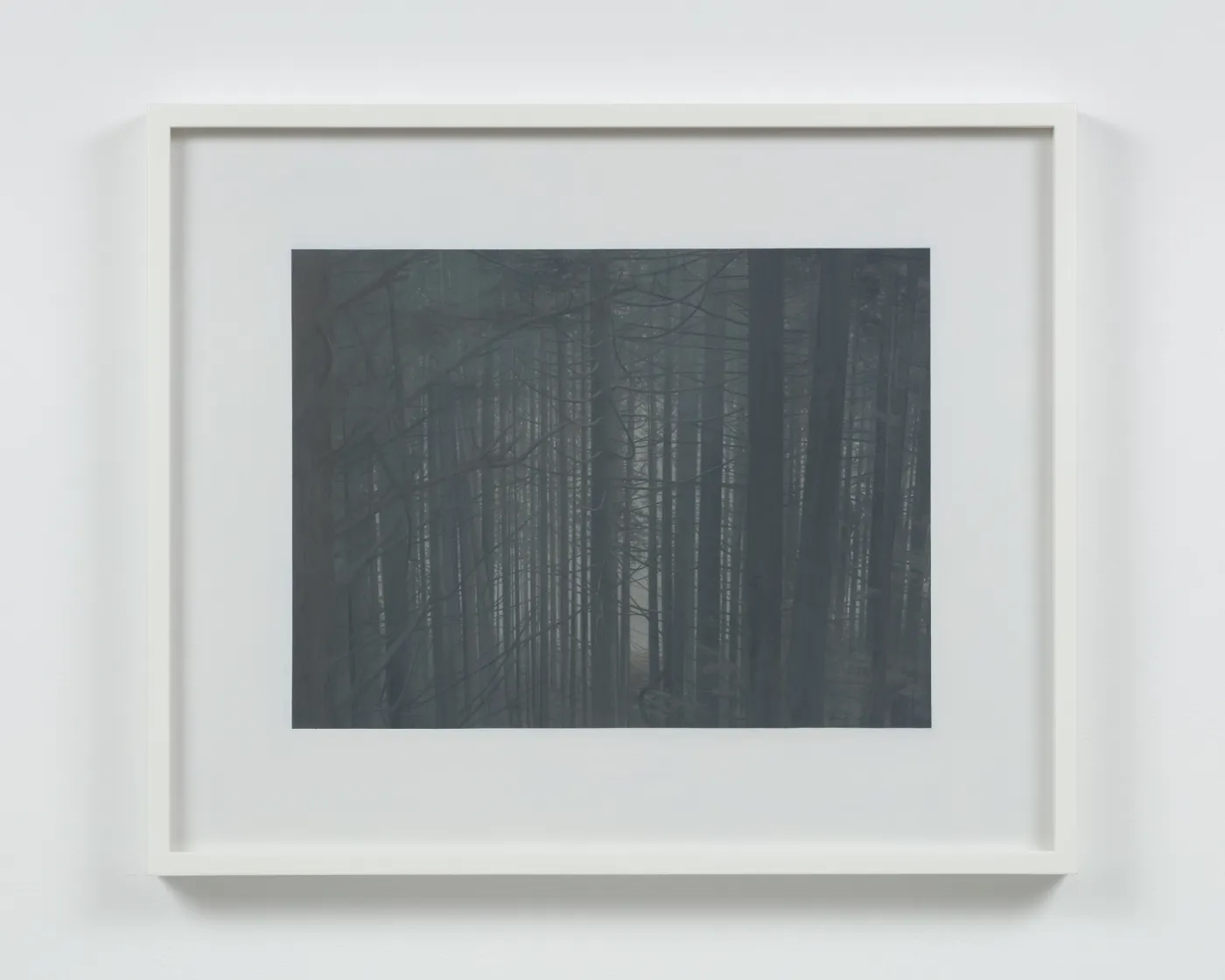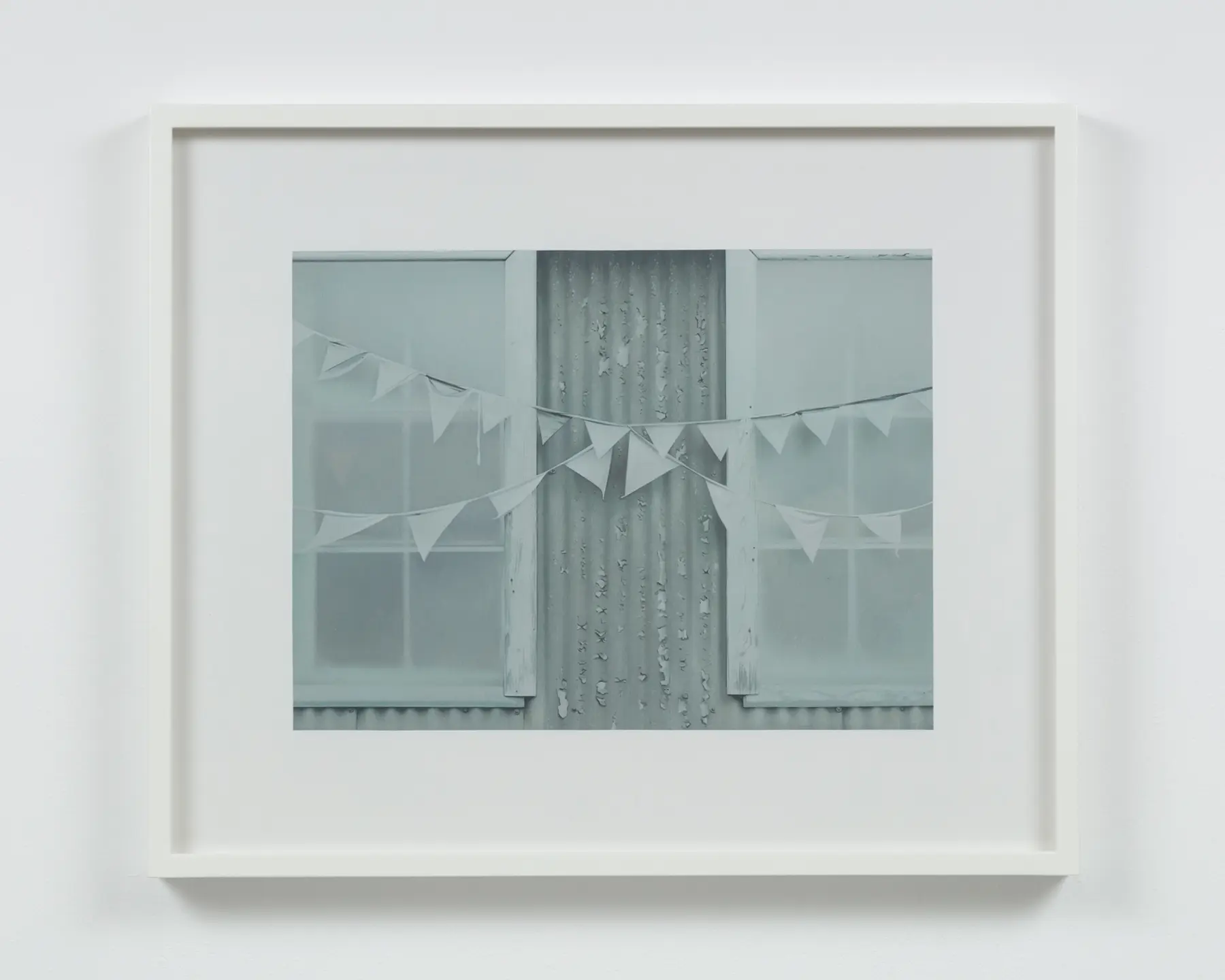Andrew Grassie: Looking for something that doesn’t exist | Maureen Paley
This exhibition is seasonally appropriate. I viewed Andrew Grassie’s monochrome paintings on the kind of dark January day where which the sun seems barely to lift from the horizon. The gallery, in an old school building, was viciously strongly lit, as if to compensate for the gloominess outside. The hard electric light made these small, grey, wintry paintings even harder to make out.
This all suits the show’s mysterious subject matter. Loch Ness is a place of legend, home to the mythical Loch Ness Monster. Over the past couple of years, London-based Grassie has spent a considerable amount of time up in the Northern Highlands, on the shores of the loch, staring into its peaty waters.

Each of the paintings on show are sourced from photos taken by the artist on location. You wouldn’t know where he was without the titles of the paintings, though: forget the mythical Nessie, Grassie doesn’t even paint the loch. The water’s somewhere over there, between the dark silhouetted pines in Through the Trees, pictured above.
Grassie works in quick-drying egg tempera paint. This lends his scenes a clarity and sharpness - he can work minute details into his tree trunks. The scrupulously-rendered textures reminded me of the Northern Renaissance masters that used the same kind of paint. Unless you look very closely, you’d say the works on show were silver print photos. The brush strokes are barely visible.
Grassie lavishes care and attention on contrasting textures. Like the slightly mouldy wooden window frames and corrugated iron walls frayed with rust in Flags (below). Again, the scene is presumably on the shores of the lake, but the water isn’t shown.

The show notes tell us that the artist got inspiration from walking around the area at night, and his decision to work in shades of grey makes it uncannily ambiguous whether the scenes are happening during the day or night. So, the viewer wonders, what time is it exactly, in the interior scene depicted in Lampshade? Is the meticulously set table glimpsed in Window Seat set for breakfast or dinner? In this way, Grassie reminded me of that other legendary artist/night walker, Léon Spilliaert.
The artist claims that he was originally inspired to use Loch Ness in his work from an old photo of a Nessie-hunter which he kept on his studio wall. In the photo, the man is training his binoculars on the lake in the hope the monster would, at last, emerge. “He was patiently investing his time and attention scanning the opaque grey waters in the hope that there might be something there and that he might be witness to it,” Grassie adds.
“Perhaps this was not so different from a painter like me, reproducing photographs, hoping that in that very act of duplication something surplus may appear.”
These lake waters have been refracted through multiple layers of myth and meaning - the legend of the Loch Ness monster, inspiring a man with binoculars, inspiring a London artist to himself take photos, make small grey egg tempera paintings from them, paintings which are then scrutinised and interpreted by me in an overlit old classroom in East London on a dark afternoon in January.
It’s the myth and meaning, the refractions, that make the lake interesting. There’s nothing special about the actual water. To make that point, Grassie set a large plastic screw-top tub, half full of Loch Ness water, directly in the middle of the gallery. The work’s called 0.000000000002013% of Loch Ness.
The humdrum nothingness of this greeny-grey substance made me turn back to the painting of the bare tree trunks, my favourite in the show, to look closer, to try to make out the lake, somewhere in the background. How uninteresting the real thing, in a plastic jerry can behind me, seemed by comparison!
Andrew Grassie: Looking for something that doesn’t exist is at Maureen Paley Studio M (London). 04 November 2022 - 15 January 2023